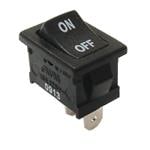Molex report: advancing rugged connectivity in aerospace & defence
Molex has released a new report from AirBorn, a Molex company, which explores the unrelenting demands for constant, continuous connectivity to support the rigors of modern aerospace, defence, and space-industry applications.
The report, ‘Defining and Advancing Rugged, Reliable Connectivity in Aerospace and Defense,’ addresses top connector design, development, and testing requirements to ensure flawless performance despite prolonged exposure to extreme environmental, mechanical, and thermal stressors.
“Pushing the boundaries of rugged and reliable connectors is paramount when lives depend on unfailing operation to complete critical missions,” said Mike Cole, SVP and president, Aerospace and Defence Solutions, Molex. “This AirBorn report offers valuable insights on the need for interconnect innovations that elevate durability, signal integrity and long-term performance.”
Engineering for extreme environments
Depending on the intended use, aerospace and defence connectors must be designed, manufactured and tested in accordance with military, space industry, reliability, and manufacturing quality standards, including MIL-STD-202, MIL-STD-810, MIL-DTL-83513, MIL-STD-1344, NASA-STD-5019, NASA ASTM-E595, NASA EE-INST-002, ECSS-E-ST-10-03C, IPC-A-610 Class 3, IPC-620 Class 3 and AS9100.
Product design factors also are crucial to maintaining uninterrupted operations in land-, sea- and space-based systems. These include resilience to intense vibrations, high-impact shock forces, temperature extremes, along with protection against excess moisture, dust, and contaminants. Equally important, aerospace and defence connectors must withstand hundreds or even thousands of mating cycles without failure. Corrosion from salt spray and oxidation also can cause rapid deterioration. The AirBorn report reinforces the need for gold plating to block oxidation and nickel underplating to protect against physical wear.
Cohesive systems ensure long-term reliability
According to the AirBorn report, designing connectors for aerospace and defence requires precise alignment of multiple features – from mating cycles to shielding and sealing – as part of a holistic connector ecosystem.
A precise balance is needed to combine capabilities while minimising design trade-offs, whether enhancing sealing, strengthening latching mechanisms or adding more shielding.
Ensuring durability over time necessitates finding and alleviating key failure points while boosting mechanical resilience, environmental adaptability, and operational longevity. The AirBorn report examines the need to optimise electromagnetic interference (EMI) shielding and signal integrity under conditions with high electrical noise. Additionally, the report details the role of sophisticated routing strategies that reduce crosstalk and signal degradation over long distances, as well as the importance of advanced shielding to maintain signal fidelity.
Sage advice on sustaining stable electrical connections is offered, including explanations on the long-term impact of engagement length, normal force, plating thickness and manufacturing precision. Additionally, descriptions of ruggedised connectors with multi-point contact systems illustrate the benefits of distributing mechanical loads during conditions of vibration and shock.
Selecting materials for performance and durability
Delving into material selection, the AirBorn report explores how choices involving base alloys, plating thickness and housing material affect mechanical strength, electrical performance, and long-term durability. Different materials used for connector contacts, plating, and housings are explained, including beryllium copper (BeCu), phosphor bronze, brass, gold, nickel, steel, aluminium alloys, high-performance polymers, and composite materials.
In addition, the report addresses the need for radiation-hardened (Rad-Hard) materials in connectors used in satellites, deep-space probes, and high-altitude aerospace systems. Built to withstand prolonged exposure to ionising radiation, these specially designed Rad-Hard connectors must resist radiation-induced embrittlement, conductivity loss and atomic oxygen erosion while maintaining reliability in vacuum environments.
Manufactured for Mission-Critical Standard AirBorn’s SInergy modular high-speed hybrid connectors merge high-speed, durability, and adaptability into high-density interconnect systems that keep pace with evolving mission needs. Modular product design offers flexibility to configure connectors based on specific requirements – ranging from high-vibration military vehicles to thermally demanding avionics or high-radiation space applications.
The future of next-generation aerospace and defence systems depends upon continued connectivity advancements. Together, AirBorn and Molex are leveraging decades of experience and specialised expertise to drive ongoing developments of increasingly reliable, rugged solutions capable of sustaining top performance under the most extreme conditions.








